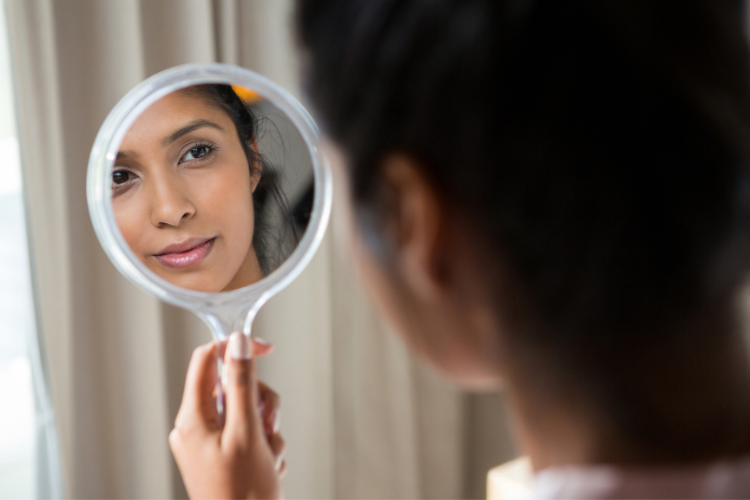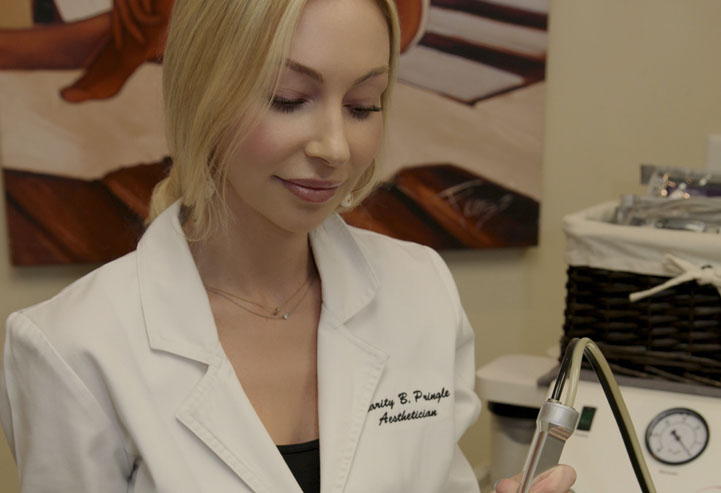Can Fillers Migrate?

Theoretically, all fillers have the potential to migrate. However, this is an extremely rare possibility — especially if you’re treated by an experienced board-certified dermatologist. It does occur in some cases, so let’s break down facial filler migration and look at how, where, and why this happens when it does.
When facial fillers are injected, there’s a small chance that they can move to another location. This migration is limited to a few millimeters away and can’t stray further from the treatment area. This is an extraordinarily rare side effect, so why are we seeing increasing evidence of it on social media platforms like TikTok?
Dermal fillers have become so popular over the last decade that many offices have added the procedure to their practice. Unfortunately, not all practitioners providing these treatments are qualified. This increases the chances of side effects like facial filler migration occurring in patients.
How Often Do Fillers Migrate?
Facial filler migration is rare, and it’s especially uncommon when the procedure is conducted by a qualified professional. Simply stated, fillers do not migrate often if performed under the right dermatologist. However, there may be an increased risk of this side effect for patients that get regular injections. Even in these cases, filler migration is highly uncommon.
Where Does Filler Migration Happen?
When facial filler migration does happen, it usually occurs in two locations: around the lips or under the eyes. It appears in the form of slight protrusions on recessions of uneven skin. These lumps or bumps can be noticeable in the rare cases where this occurs.
Why Does Filler Migration Occur?
Most cases of filler migration occur when someone chooses an inexperienced or untrained practitioner for treatment. They are liable to use the wrong filler or make an injection in the wrong place.
If a low-cohesive filler is used in large amounts where a highly cohesive filler should’ve been used, it can easily lead to migration. Also, different fillers need to be injected at different depths and in accordance with the fat and volume of the injection site. A misstep made here can encourage a filler to migrate.
If an area is overfilled, it can cause migration as well. Too much filler will move if it can’t fit into the intended area. This happens most often in the lip area, creating the appearance of a “filler mustache” or “duck lips.” When we see this happen around the eyes, bumps are the result. This area has significantly thin skin, which is why we see migration here more often than in other places.
Sometimes, injection appointments are placed too close together. If there’s not enough time between appointments, fillers don’t have a chance to settle. This leads to the risk of overfilling areas or simply filling them too quickly to get good results.
Occasionally, migration can happen because a patient overhandles the treatment area after injections. In order to heal correctly, the area needs time to be left alone for the filler to settle. If this is disrupted due to too much poking and pushing, the filler can get relocated.
In especially rare cases, this can happen because of an unrelated illness in the patient. Sometimes, an adverse immune response can result in this side effect within 12 months after an injection. Additionally, inflammation can cause filler cells to expand. In these cases, the migration usually occurs years after injection.
How Can You Prevent Fillers From Migrating?
The best way to prevent fillers from migrating is to choose a board-certified dermatologist. When you’re scheduling your procedure, make sure you’re choosing a qualified and experienced practitioner. This reduces the chance of all side effects from occurring, including filler migration.
After your injections, make sure to follow the instructions of your board-certified dermatologist. Unless instructed otherwise, don’t press or prod the area. Massages could encourage migration, so let the area heal by leaving it as untouched as possible. This notion extends to your facial movements as well. Try not to over-exaggerate your facial movements or engage in vigorous exercise for a day or two after your injections. This gives the fillers time to settle in, reducing the risk of migration.
Trust Coast Dermatology for Reduced Risk of Migration for Fillers in Laguna Beach, CA
Here at Coast Dermatology in Laguna Beach, California, Dr. Glenn Goldberg helps patients by providing them with expertly conducted facial filler injections. He’s a board-certified Cosmetic, Medical, and Surgical Dermatologist who has the qualifications and experience necessary to get you phenomenal and safe results. Working with him can help reduce your risk of experiencing side effects like filler migration.
Our office offers a wealth of premium products and services to help you look your best. You can rely on our experts for Dermal Fillers & Wrinkle Relaxers, Skin Rejuvenation, Skin Resurfacing, and Skin Tightening procedures. No matter how you’re looking to rejuvenate your appearance, we have the expertise that can get you the most beautiful results while limiting the risk of side effects. Contact us to schedule your consultation today!





